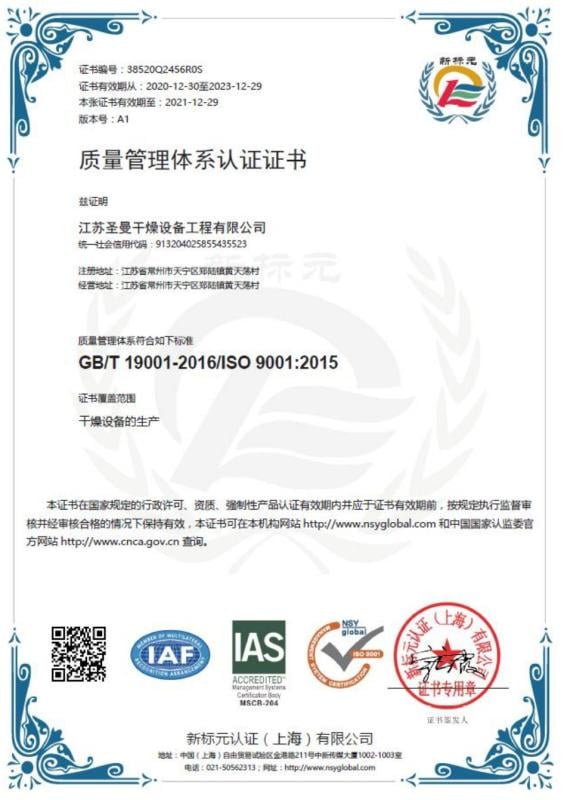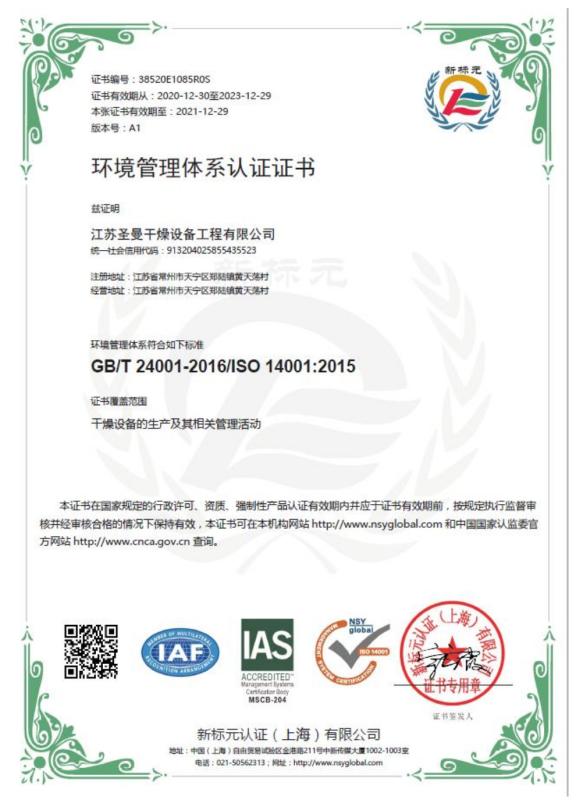Jiangsu Shengman Drying Equipment Engineering Co., Ltd
- Annual Revenue >10,700,000 USD
- Employees >50
- Year Established 2011
- Manufacturer
Certification
See All



 Copyright 2023 ucbis.com All Rights Reserved.
Copyright 2023 ucbis.com All Rights Reserved.
Continuous Vacuum Blade Hollow Paddle Dryer For Sludge Dewatering
Trending Now Continuous Vacuum Blade Paddle Dryer for Sludge Dewatering
Structure introduction:
The main structure is a W-shaped shell with a jacket, which is equipped with a pair of hollow low-speed rotating hollow shafts. A number of mixing blades are welded on the shaft. The jacket and the hollow mixing blades are all equipped with heat carriers, and the two heating surfaces heat the materials at the same time. The heat carrier is usually fed from the middle of the dryer and discharged from the other side through the surface of the material layer in the agitated state.
Wedge-shaped hollow blades are densely arranged on the hollow shaft, and the thermal medium flows through the blades through the hollow shaft. The unit effective volume has a large heat transfer area. The temperature of the thermal medium ranges from - 40 ° C to 320 ° C, which can be water vapor or liquid type: such as hot water, heat transfer oil, etc. Indirect conduction heating does not carry air to take away heat. Heat is used to heat materials. The heat loss is only the heat dissipation to the environment through the insulation layer of the reactor body. The heat transfer surface of the wedge-shaped blade has the function of self-cleaning. The relative movement of the material particles and the wedge-shaped surface can wash off the attached materials on the wedge-shaped surface, so that the clean heat transfer surface is kept in motion all the time.
The cylinder is a jacket structure in which hot steam circulates inside. During operation, water vapor is introduced into the jacket, hollow shaft, and blade to provide the heat required for drying; a very small amount of air is introduced into the dryer and used as a carrier for the steam (or organic steam) that evaporates during drying; the material enters the machine from the feed port, and is conveyed by the hollow blade to the discharge port for discharging. The material is heated and evaporated by the hollow blade and the jacket during the conveying process to be dried. The heat transfer surface of the wedge blade has a self-cleaning function. The relative motion between the particles and the wedge surface produces a washing effect that washes away the adhering material on the surface of the blade, which allows the material to have a long residence time and a high fill factor.

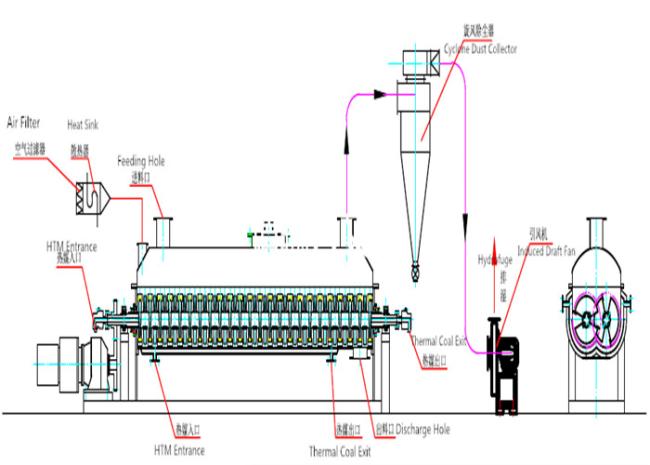
Technical parameters
| Model | KJG-2.7 | KJG-24 | KJG-52 | KJG-81 | KJG-110 |
| Heat transfer area | 2.7 | 24 | 52 | 81 | 110 |
| effective volume | 0.06 | 1.53 | 3.96 | 6.43 | 9.46 |
| revolution | 15-30 | 10-20 | 10-20 | 5-15 | 5-10 |
| power | 2.2 | 11 | 30 | 55 | 95 |
| width of dryer body | 306 | 1118 | 1474 | 1828 | 2210 |
| total width | 736 | 1474 | 1854 | 2286 | 2668 |
| length of dryer body | 1956 | 3454 | 5258 | 6020 | 6122 |
| total length | 2972 | 6147 | 8306 | 9678 | 9880 |
| distance between feeding and disharging | 1752 | 3150 | 4954 | 5562 | 5664 |
| height in center | 380 | 1066 | 1220 | 1220 | |
| total height | 762 | 2032 | 2464 | 2668 | |
| steam inlet | (2) 3/4 | (2) 1 | (2) 11/2 | (2) 11/2 | (2) 2 |
| water outlet | (2) 3/4 | (2) 1 | (2) 11/2 | (2) 11/2 | (2) 2 |
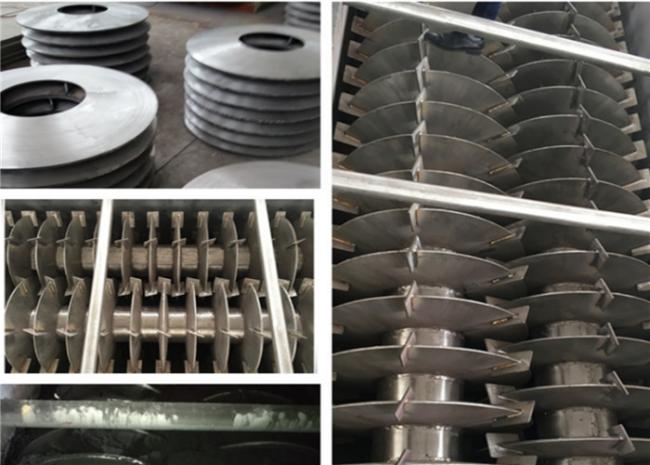
Applications
Petrochemical industry: polyolefin powder, polycarbonate resin, high and low-density polyethylene, linear low-density polyethylene, polyacetal granules, nylon 6, nylon 66, nylon 12, acetate, polyphenylene sulfide, propylene base resin, polypropylene, engineering plastics, polyvinyl chloride, polyvinyl alcohol, polystyrene, polyester, polyoxymethylene, styrene-acrylonitrile copolymerization, ethylene-propylene copolymerization.
Environmental protection industry: sludge, electroplating sewage sludge, boiler soot, sugar factory waste residue, pharmaceutical factory waste residue, MSG factory waste residue, coal ash.
Feed industry: soy sauce residue, bone-based feed, distiller's grains, food scraps, apple pomace, orange peel, soybean meal, chicken bone feed, fish meal, feed additives, bio-sludge.
Food industry: starch, cocoa beans, corn kernels, salt, modified starch, medicines.
Chemical industry: soda ash, NPK compound fertilizer, kaolin, bentonite, white carbon black, carbon black, phosphogypsum, calcium sulfate, calcium nitrate, magnesium carbonate, sodium cyanide, oxidized sodium fluoride, aluminum hydroxide, barium sulfate, calcium carbonate, molecular sieves, dyes, saponins.
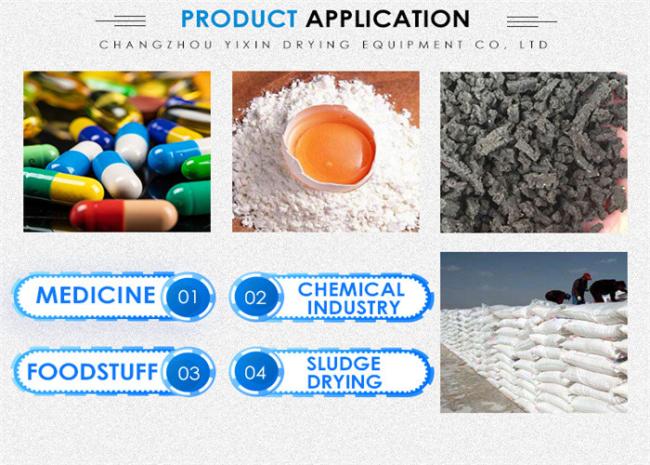
Paddle dryer has following main features:
1.Compact structure, large efficient heat transfer area, and small occupied
area.
2.Stirring is uniform, heat efficiency is high, and drying efficiency is good.
3.Paddle shafts can mesh each other, and have self-clean function, it can
avoid material stick on the wall.
4.Energy consumption is low, and operating cost is low
5.Little dust carried out, little material loss
6.Heat indirectly, material can not be polluted
7.Rotary speed of paddle shaft is low, it will not destroy the shape and
property of product
8.Operating flexibility is large, running is stable and reliable.











